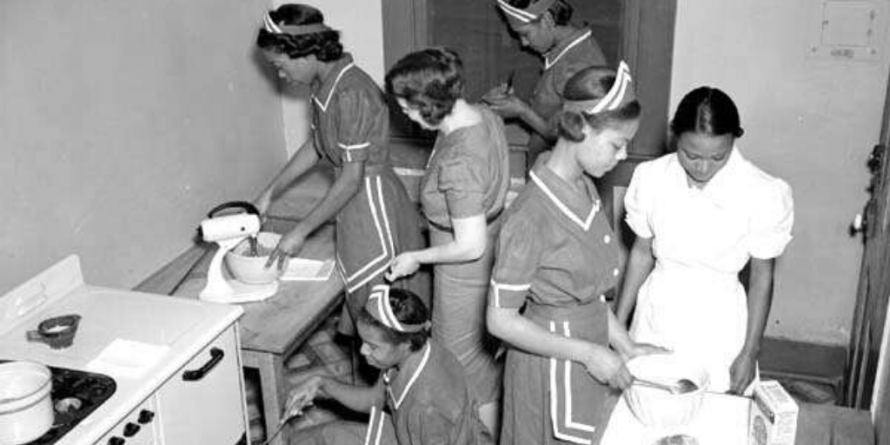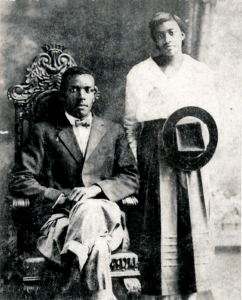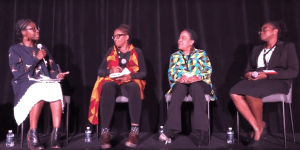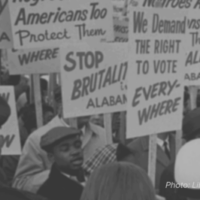I am thrilled to start this new year and decade as NELP’s new Executive Director! Taking the helm of this wonderful organization, where I have grown in my leadership over the past ten years, I am grateful for the leadership of our previous executive director, Christine Owens, and thankful to have the enthusiastic support of Chris and NELP’s board, staff, partners, and allies. Amid the many challenges faced by our movement, I am excited to build on NELP’s significant achievements in service of a more just world for workers.
I’d like to share with you why I’m compelled to lead NELP and be a part of this movement based on my own history and lived experience, which is tightly woven with the history of the U.S.
My story begins in rural Mississippi, in a family with sharecropping roots. In 1938, the year that my father was born, the New Deal was in full swing. While Social Security, minimum wage, overtime pay, and the right to organize were all part of the package, my father, his family, and just about everyone they knew were left out because of exclusions for agricultural and domestic workers.
Without mentioning race, the New Deal exclusions were geographically targeted to workers in the South and West: Nearly half of all Black men, Mexican American men, and Native American men and women were affected, plus significant numbers of Asian American workers as well.
Significantly, the greatest harm was felt by Black women. Ninety percent—yes, 9 in 10—of Black women worked either as a “domestic” or in agriculture in the 1930s. It’s not lost on me that I, a Black woman, am about to take the helm of an organization that advances workers’ rights with a commitment to racial and economic justice.

Black women receive WPA program training on how to do domestic work in the 1930s. Credit: WPA Photo/Wikimedia Commons
It’s also not lost on me that this so-called “race silent” package of reforms and benefits has been mischaracterized as a universal, colorblind set of interventions presumed to lift all boats. Our work is to dismantle this narrative and create a new one—lifting all boats by centering Black workers, including immigrants and women, instead—and being clear that poor and working-class white people are our allies in the work that lies ahead to protect and strengthen workers’ rights.
Colorblind policy approaches have ignored a long arc of compounding injustices in places like my hometown of Brookhaven, on Choctaw land in southwest Mississippi, from where native people were removed in the Trail of Tears, and where 55 percent of people are Black. In 1955 in Brookhaven, our cousin, Lamar Smith—a Black farmer and WWI veteran—was shot and killed in broad daylight on the county courthouse lawn because he had the audacity to register Black folks to vote and help with absentee ballots, so they weren’t harassed at the polls. In 1969, when NELP was created, Brookhaven was still operating separate school districts for Black and white students. It only integrated in 1970 and remains under a Department of Justice integration order.
 An early photo of Lamar Smith and his wife Annie Clark Smith.
An early photo of Lamar Smith and his wife Annie Clark Smith.
Source: Collection of Mary Byrd Markham.
We must discard the false narrative that we all have equal opportunities, and that if Black folks, indigenous folks, and immigrants are not thriving, it’s their own fault—they aren’t working hard enough. I am compelled to be a part of this movement that recognizes a history of resistance and the agency of workers of color in achieving the equity and justice all workers need to thrive.
I will be stepping into this role, bolstered with a strong foundation for success as a leader with the ability to put my mark on the movement.
When women of color have an opportunity to lead an organization, they’re often asked to take on a risky proposition in the form of a shaky, struggling organization. But not NELP. I will be stepping into this role, bolstered with a strong foundation for success as a leader with the ability to put my mark on the movement.
Because as an organization, we have a shared vision of what kind of organization we want to be, and what kind of world we want to join with you all to create.
A world where one job is enough. Where our children will be better off than their parents. A world where policy change centers the wisdom of those directly affected. A world where we all can step into our full power.
For the last three years, with tremendous support and trust from our previous executive director Chris Owens and the whole NELP staff, I’ve led an internal racial equity process that is the foundation for embedding race equity analysis into every aspect of NELP’s work, internally and externally.
Rebecca Dixon—NELP’s incoming executive director—along with NELP Work Equity Director Kemi Role, and movement leaders Jaribu Hill and Anne Price—talked about how centering Blackness as a framework and movement practice is key to shifting conditions for all workers at the We’re All In! morning plenary, “About the We”: Drawing from the Legacies and Lineage of Black Feminist Praxis for Workers’ Rights Transformation.
We’ve begun to weave together our big, bold response to the climate crisis, to the ways that new technologies, unchecked, threaten once again to reinforce the exploitation and exclusion of workers of color. We’ve begun to work on how we dismantle this labor market hierarchy, this caste system, where—400 years after enslaved people first landed on these shores—Black families still live in fear of losing their freedom, or their lives, in the name of some strange “justice.” Where Black families still can’t build wealth and are still relegated to the least valued, dirtiest, most dangerous occupations.
NELP will continue to join with allies and to provide the “Cadillac” technical assistance we are known for, and we are excited to rise to this moment and lead on the most pressing issues in work and in racial justice.
We look forward to all we will achieve together.
In solidarity,
Rebecca Dixon
Executive Director, NELP





